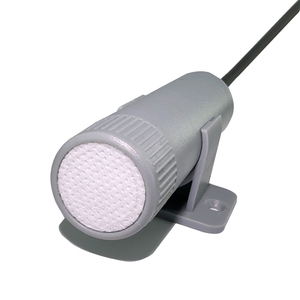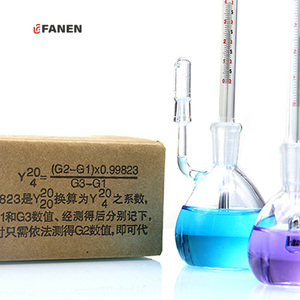
All categories
Featured selections
Trade Assurance
Buyer Central
Help Center
Get the app
Become a supplier

(843 products available)











































Mems gas sensors are available in various options in the market. Each type is designed to measure specific gases or range of gases.
One of the most important gas detection solutions, the Mems natural gas sensor, is sensitive to methane concentration in ambient air. For this reason, many prefer this sensor because of its ability to detect natural gas, often used in various industries. In addition, oil and gas, mining, and utilities rely on this high-performance sensor to enhance their workers' safety by improving risk management and ensuring they do not operate in volatile environments. This detector uses advanced microtechnology to deliver highly accurate readings while remaining compact and lightweight. This MEMS sensor's fast response time and low power consumption make it ideal for continuous monitoring in both industrial and commercial settings.
Mems Co2 sensor is designed to measure carbon dioxide levels, widely used in air quality monitoring, indoor environmental control, and greenhouse agriculture. Its proprietary electrochemical sensing technology allows this sensor to provide exceptionally accurate and real-time data feedback. People in the agricultural sector often use the sensor to optimize growth conditions in greenhouses by maintaining ideal CO2 levels for plants. In HVAC systems, these sensors ensure energy efficiency by adjusting ventilation based on current CO2 concentrations. Due to its compact size and low power requirements, this sensor is excellent for portable and fixed monitoring applications.
A methane Mems sensor is highly effective in detecting the concentration of methane gas in its environment. This sensor is crucial for industries like oil and gas, where it is critical to monitor methane levels to ensure safety and avoid explosion risks. With advanced MEMS technology, the sensor provides fast and accurate readings while consuming minimal power. Some users employ this sensor for leak detection purposes, enabling them to locate and fix issues in real time. This proactive approach not only enhances workplace safety but also enables companies to adhere to environmental regulations by reducing their risk of escaping greenhouse gases.
Natural-gas-leak detectors, also known as gas sensors, are essential in identifying gas leaks and preventing potential hazards. These detectors utilize advanced MEMS technology to ensure high sensitivity and quick detection of various gases, including methane and propane. Often, people use these sensors in industries such as oil and gas, construction, and mining, where gas leaks can pose serious risks. In addition, the MEMS technology employed in these sensors allows them to be compact, lightweight, and energy-efficient, making them ideal for portable and fixed monitoring solutions. Its ability to enable real-time detection helps users respond quickly to potential hazards, thus, minimizing risk.
Every thing equipment has different specifications that buyers need to understand and consider before purchasing. Following are the specs for MEMs-based gas sensors in general:
This refers to the concentration levels of the target gases the sensor can detect, typically expressed in parts per million (ppm) or percentage by volume. It is worth mentioning that most MEMS methane sensors have a range of 0-100,000 ppm of methane, while MEMS carbon dioxide sensors have 0-10,000 ppm detection ranges.
This is the time taken by the sensor to reach its reading once it is subjected to a gas concentration change. Quick response times are critical in applications requiring immediate detection of gas leaks or hazardous conditions. Most MEMS gas sensors have a response time of about 1-15 seconds, while others take longer depending on the model and target gas.
Many MEMS sensors are made to operate efficiently, thus consuming less power. This makes them ideal for portability and battery-powered devices. Typical power consumption is in the milliwatt range, though some low-power sensors require as little as 10 microwatts.
The temperature range for which MEMs gas sensors are usually designed to operate lies between -20 °C and 50 °C. While some are designed to work in extreme environments, most are made to function in this normal range, particularly for industrial monitoring.
Gas Sensors are often compact and typically measure about 10 mm x 10 mm x 5 mm for easy integration into various applications.F Moreover, these sensors can come in portable and fixed systems for infrastructure, industrial machinery, and environmental monitoring.
Mems sensors are used in many industries and applications because of their accuracy and efficiency. Below are some common places where they are applied:
In industrial environments where people work with hazardous gases such as chemicals, petrochemicals, and other substances, Mems sensor monitoring is essential to safety. When detecting gas leaks or hazardous emissions, these sensors provide real-time data and trigger alerts so that workers can evacuate and the threats can be mitigated. This helps reduce accidents, improve compliance with safety regulations, and enhance operational efficiency.
People use Mems gas sensors in HVAC systems, where these sensors monitor indoor air quality, detect the presence of gases like carbon monoxide, methane, and others, and thus enable automatic ventilation or alarms. Users can ensure occupant safety and energy efficiency by integrating these sensors into home automation systems.
Farmers and other agriculturalists use Mems CO2 sensors in greenhouse management. These sensors help maintain optimal growth conditions by monitoring CO2 levels, temperatures, and other environmental factors affecting plant growth. This enables the agriculturalist to provide the ideal environment for plants, thus enhancing production.
Mining is another field where these sensors are crucial in detecting hazardous gases such as methane and hydrogen sulfide. In underground mining where the visibility is low, these sensors are vital for maintaining air quality and preventing explosions. Real-time monitoring allows miners to work more safely by providing immediate feedback on gas levels.
How long Mems air quality monitor will last depends on many factors. Below are some common factors that affect the durability of Mems gas sensors:
Exposure to extreme temperatures, high humidity, or corrosive environments can degrade a sensor's materials and components, shortening its lifespan. Some MEMS gas sensors are designed to withstand such harsh conditions, but those that don't will be affected by the surrounding environment. For this reason, users in extreme working conditions must choose gas sensors compatible with their working conditions.
Gas sensors can be physically damaged by vibrations, shocks, or mechanical impact, especially in industrial settings. To avoid this, users must apply proper mounting and protection measures to ensure durability. Besides this, being handled roughly can break the sensor, thus ensuring that the sensor is treated properly. Using the right one for the job can prevent its components from getting damaged during usage.
In some cases, particulate matter, dust, or other contaminants can deposit on the sensor surface, affecting its sensitivity and accuracy. This will then reduce the lifespan of the gas sensor. When working in environments that are heavily contaminated, users must have suitable protective measures such as filters or enclosures to improve the sensor durability. In addition, regular maintenance and replacement of the sensor can also prevent contamination from damaging the sensor.
Gas sensors may have shorter lifespans if they are not calibrated, cleaned, and maintained according to the manufacturer's recommendations. Maintenance activities such as cleaning, filter replacement, and periodic calibration help maintain the sensor's accuracy and extend its operational life. Users should always have a regular maintenance schedule to ensure their gas sensors last a long time.
A1: Mems sensors are smaller, more sensitive, and provide faster, more accurate gas readings than traditional sensors. They also consume less power and are more durable, making them ideal for various applications.
A2: Some Mems gas sensors can withstand extreme temperatures and harsh environmental conditions when designed specifically for such applications. Always ensure the gas sensor can work in the condition in which it will be exposed.
A3: Yes, Mems gas sensors are sensitive to carbon dioxide, methane, oxygen, and volatile organic compounds. Some are even better than others at detecting specific gases, enabling their diverse usability.
A4: Continuous exposure to high concentrations of toxic gases can poison or degrade the sensing materials inside the sensors, reducing their accuracy and lifespan over time.
A5: In harsh working conditions, the best way to protect the sensor is by using the appropriate one for the job and ensuring it undergoes proper maintenance and protection measures from physical and environmental damage.